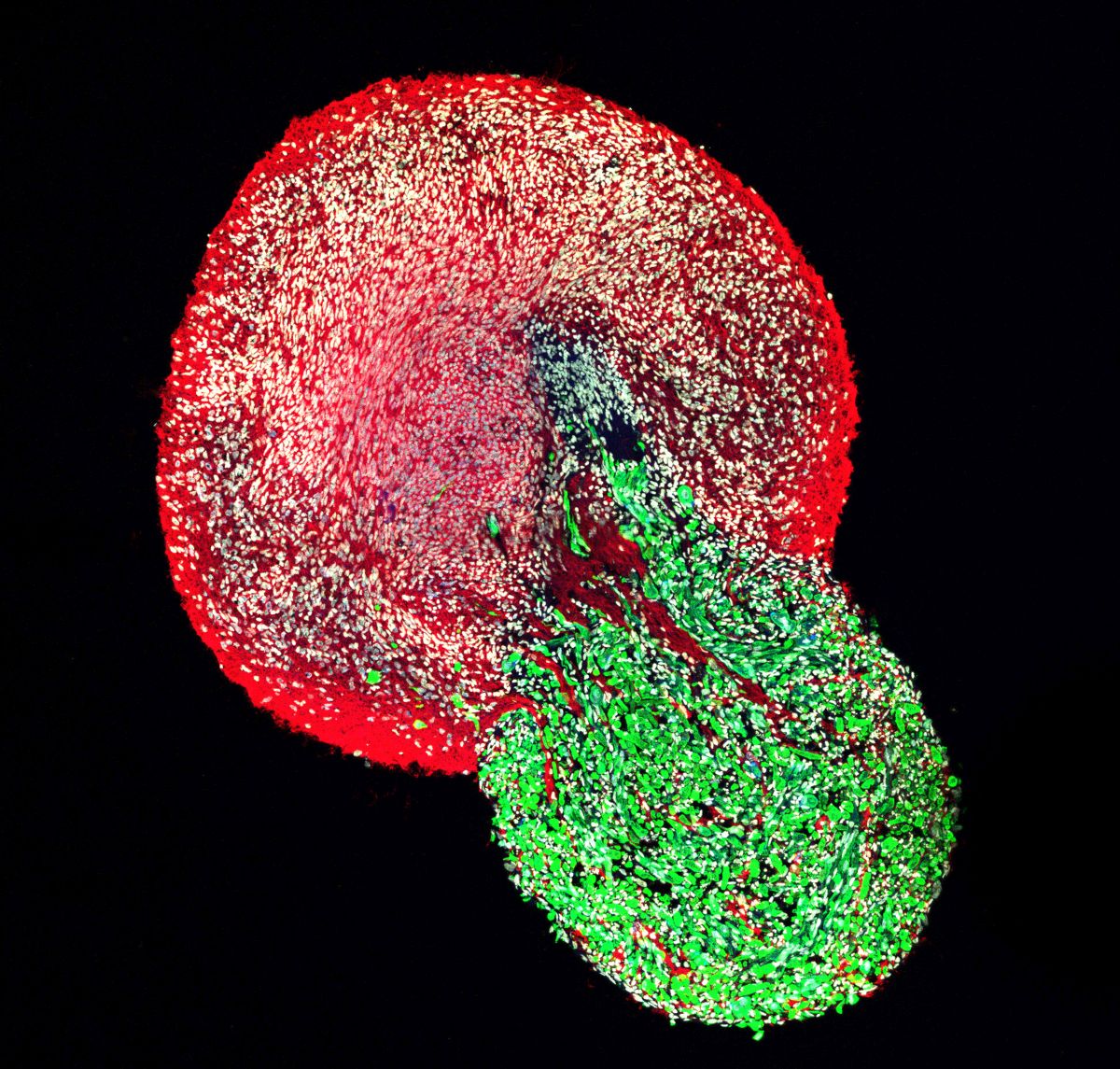
News
Mina Gouti awarded ERC Consolidator Grant
09.12.2020 /

The motor neurons controlling arms, legs and other skeletal muscles come from distinct sections of the spinal cord. Organoids – miniature, organ-like structures grown in the lab – representing each segment aim to reveal regional differences in degenerative diseases and identify potential treatments for spinal muscular atrophy (SMA) and amyotrophic lateral sclerosis (ALS).
“With this grant, we have a great opportunity now to realize our ideas, take our organoid model to the next level, and prove that the model is useful for identifying novel therapies,” says Gouti, who leads the Stem Cell Modeling of Development and Disease Lab at the Max Delbrück Center for Molecular Medicine (MDC).
ERC Consolidator Grants are awarded to “outstanding researchers of any nationality and age, with at least seven and up to twelve years of experience after PhD, and a scientific track record showing great promise and an excellent research proposal.” Research must be conducted in a public or private research organization in a European Union Member State or associated country.
GPS organoids
Gouti and her colleagues recently developed very advanced neuromuscular organoids that contain all critical cell types involved in the formation of functional neuromuscular junctions. The result is the organoid’s motor neurons instruct its mini-muscles to contract like in the human body. Those organoids, reported in Cell Stem Cell in early 2020, resemble the lower part of the spinal cord communicating with leg muscles.
Now, with the ERC support, her lab will work on “Generation of Position Specific (GPS) organoids” – developing organoids that represent the middle and upper sections of the spinal column. Having position-specific organoids is important because motor neurons that control different muscle groups are located in distinct regions of the spinal cord. In SMA and ALS, motor neurons innervating limbs, located in the upper and lower sections of the spinal cord, are usually affected first, while motor neurons from the middle section are affected later. The organoids will enable the researchers to explore in detail what influences these differences, and the sequence of events leading to disease before the onset of symptoms.
“Studying these diseases has so far been extremely difficult due to the limited availability of reliable human in vitro models that take into account the position of the motor neurons and the interaction with the skeletal muscles,” Gouti says.
Drug screening
The grant also specifically funds a high-content imaging system, which is a confocal microscope that can analyze multiple organoids in one go. The system will help the team screen how organoids generated from SMA patient cells react to different drugs. The researchers can help validate newly established treatments, investigate the best time to begin treatment to prevent motor neuron death, and potentially identify novel therapies.
Since the organoids are generated from human induced pluripotent stem cells, they provide an excellent opportunity to screen drugs in the target tissue. “I hope the organoid model can be a bridge between preclinical and clinical trials,” Gouti says. “It’s as close to a human as you can get.”
The whole system
The next phase of research will also include fusing cerebral organoids with neuromuscular organoids and seeing if they will form functional connections. “The neuromuscular organoids we have developed stay alive in the lab for more than 18 months, but they stop contracting after some months,” Gouti says. “We think this might be because there is no input from the brain.”
Fusing brain-like organoids with neuromuscular organoids would enable the researchers to study the full neuromuscular circuit in the lab, starting with signals from the brain going to the spinal cord and then the muscle.
Further recognition
Last week, the European Molecular Biology Organization (EMBO ) also named Gouti one of 30 EMBO Young Investigators in 2020. More than 200 researchers applied. “These 30 scientists have demonstrated scientific excellence and are among the next generation of leading life scientists,” says EMBO Director Maria Leptin. “Their participation in the EMBO Young Investigator Programme will help them in this critical phase of their careers.”
EMBO Young Investigators are outstanding life scientists who have established their first laboratories in the past four years. They join a network of 73 current and 384 past Young Investigators. EMBO offers the researchers access to a range of benefits, including an award of €15,000 and the opportunity to apply for additional grants of up to €10,000 per year, as well as networking and training opportunities.
“I am looking forward to connecting with researchers and mentors in the EMBO network,” Gouti says. “It’s a great opportunity, not just for me, but for members of my lab who can now also participate in EMBO activities. We are all very excited.”
Text: Laura Petersen
Source: MDChttps://www.mdc-berlin.de/news/press/mina-gouti-awarded-erc-consolidator-grant